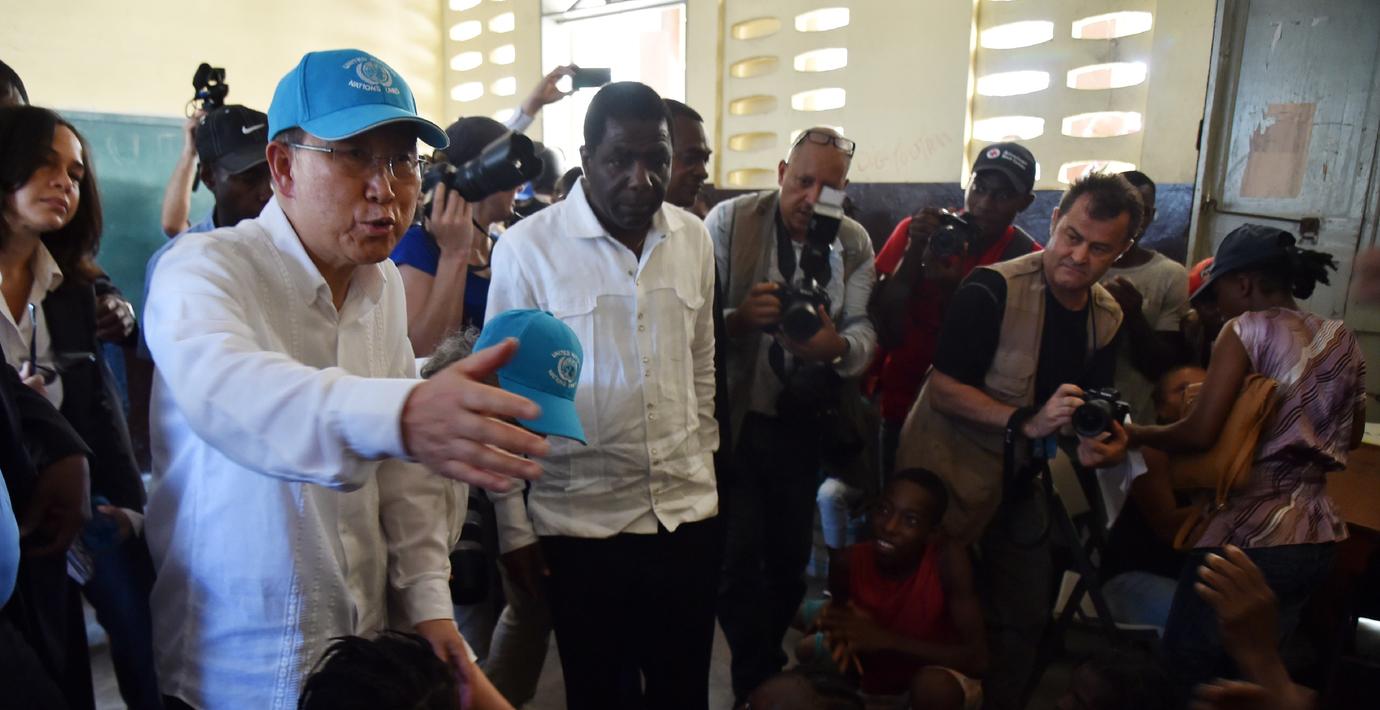
Ban Ki-moon ber om ursäkt för koleraepidemi
FN:s generalsekreterare Ban Ki-moon bad på torsdagen om ursäkt till invånarna på Haiti för kolerautbrottet i landet.
– Vi gjorde helt enkelt inte tillräckligt för att bekämpa det och dess spridning på Haiti. Vi är väldigt ledsna för den roll vi spelade, sa han.
Flera forskare menar att kolerautbrottet kom till Haiti via nepalesiska fredsstyrkor som var i landet på uppdrag av FN 2010. Det ville inte Ban Ki-moon medge i sitt uttalande.
bakgrund
Kolerautbrottet på Haiti
Wikipedia (en)
The ongoing Haiti cholera outbreak is the worst epidemic of cholera in recent history, according to the U.S. Centers for Disease Control and Prevention. After the 2010 earthquake, in little over two years, as of April 2013, it has killed at least 7,000 Haitians and sickened a few hundred thousand more while spreading to neighboring countries including the Dominican Republic and Cuba. Since the outbreak began in October 2010, more than 6% of Haitians have had the disease. While there had been an apparent lull in cases in 2014, by August 2015, after the rainy season that year brought a spike in cases, more than 700,000 Haitians had become ill with cholera and the death toll had climbed to 9,000.
The outbreak began in mid October 2010 in the rural Center Department of Haiti, about 100 kilometres (62 mi) north of the capital, Port-au-Prince, killing 4672 people by March 2011 and hospitalising thousands more. The outbreak occurred ten months after a powerful earthquake which devastated the nation's capital and southern towns on 12 January 2010. It is widely believed to have been introduced by Nepalese peacekeepers from the UN. By the first 10 weeks of the epidemic, cholera spread to all of Haiti's 10 departments or provinces.
As of 12 December 2012, hospitalizations (2,300 per week) and deaths (40 per week) are roughly triple since Hurricane Sandy struck the island in what was expected to be a quiet cholera season, causing more deaths than the cyclone took in all countries combined. In November 2010, the first cases of cholera were reported in the Dominican Republic and a single case in Florida, United States; in January 2011, a few cases were reported in Venezuela. The epidemic came back strongly in the 2012 rainy season, despite a localised delayed vaccine drive. In late June 2012, Cuba confirmed three deaths and 53 cases of cholera in Manzanillo, in 2013 with 51 cases in Havana. Vaccination of half the population is urged by the University of Florida to stem the epidemic.
In August 2016, after a report from the United Nations Special Rapporteur Philip Alston, the Secretary General of the United Nations accepted responsibility for the UN's role in the initial outbreak.
Omni är politiskt obundna och oberoende. Vi strävar efter att ge fler perspektiv på nyheterna. Har du frågor eller synpunkter kring vår rapportering? Kontakta redaktionen